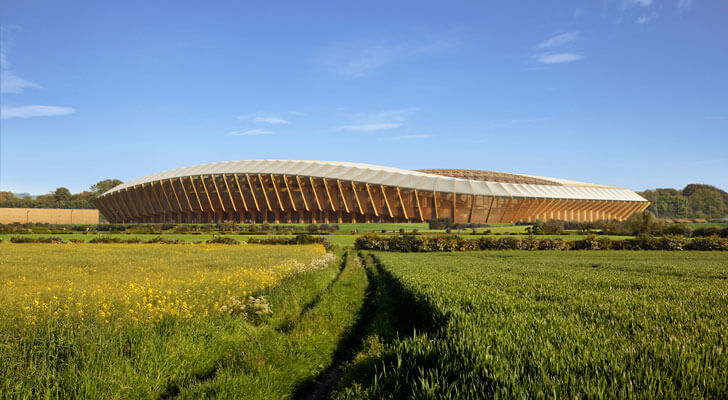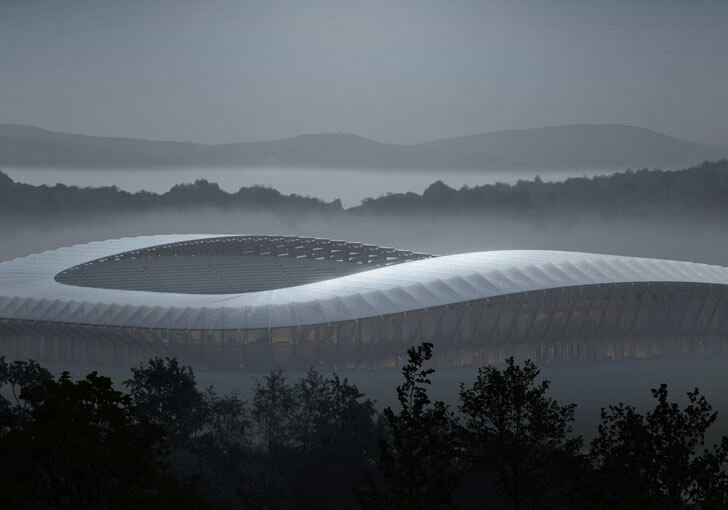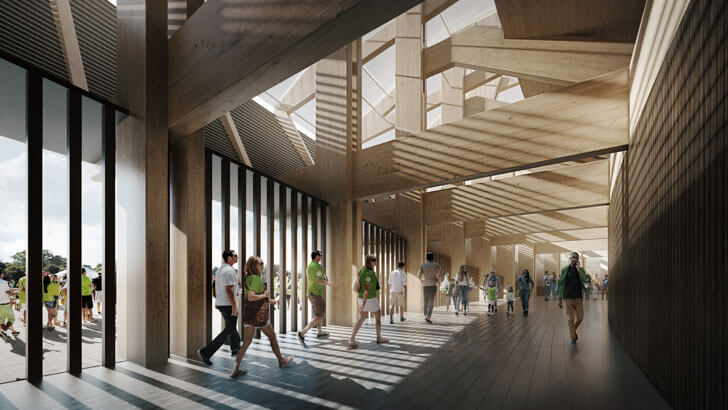Compiled by TeamIAnD
Renders: VA; courtesy ZHA
Read Time: 1 min 30 sec
 |
| . |
Zaha Hadid
Architects winning entry for the new football stadium in Stroud, UK will be the
world’s first all-wood structure with low carbon emittance.
As winners of
the competitive project, Zaha Hadid Architects have conceptualised the stadium
design with green features at its core. Combining the latest material research
and construction techniques with new design approaches to build a more
ecologically sustainable and inclusive architecture, the new Forest Green
Rovers stadium will be in line with the club’s heritage, ambition and vision.
Embodying low
carbon construction methods and operational processes, the stadium will have
every element made of sustainably sourced timber including its structure, roof
cantilevers and louvred cladding, making it the first all-timber football
stadium in the world.
The importance
of wood is not only that it’s naturally occurring; it has very low embodied
carbon – about as low as it gets for a building material. Also, it is highly
durable, recyclable and aesthetically resplendent. Therefore, the seating
terraces and floor slabs, otherwise generally made form concrete or steel, are
also to be made from timber.
The stadium’s
roof will be covered by a transparent membrane, which will contribute to turf
growth, minimize stark shadows for players and fans and reduce the volumetric
impact of the stadium from distant views in the surrounding landscape. Furthermore,
the design retains and enhances the existing meadow landscape of the site.
The spectator
bowl will have fans seated as close as five metres from the pitch and the
position of every seat is calculated to provide excellent, unrestricted views
of the entire field of play. Here too,
future expansion has been accounted for and the initial estimate of 5,000
spectators in phase one can be scaled to double the number in phase two without
the cost of major construction works.
With plans for
Eco Park also in place as an adjunct to the stadium, the design embodies that sustainable
architecture can be dynamic and beautiful!





No comments :
Post a Comment